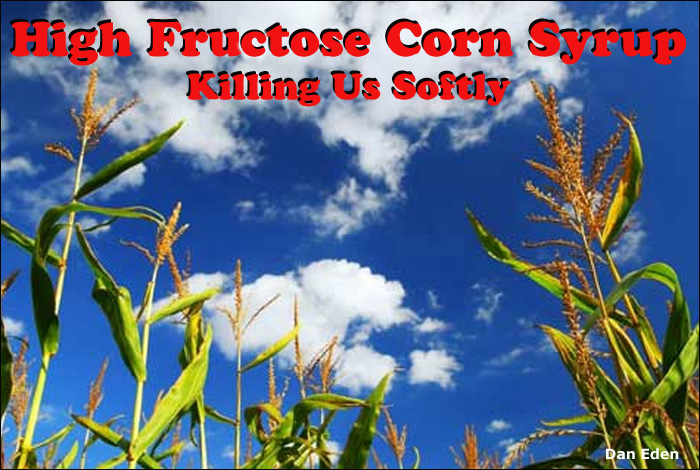
There was a time when "food" was something you ate or drank to nourish your body. It's a necessity of life -- like air and water -- and you could usually depend on food to be nourishing and healthy. But then something happened. Someone decided that food didn't have to be nutritious or healthy -- as long as they could make a profit from selling it.
But something has changed. Over the past year we have seen hidden cameras that documented Chinese bakeries who substituted bacon grease and cardboard as the filler of meat dumplings. We've had stories of anti-freeze and brake fluid being used as a cheap sweetner in everything from candy to cough medicine and toxic chemicals used to fake the protein analysis of baby and pet food -- all to make a profit. These high profile examples of greed have made people seriously ill and have even killed dozens of people. But a more sinister product of greed and poison is probably in your body right now -- killing you softly with sweetness. High Fructose Corn Syrup -- killing you softly
The Greed HFCS is a useful ingredient because it's sweet and saves the food producers money. Real sugar is very expensive because of sugar tariffs and import quotas. Even with all the chemistry and processing, HFCS is still the cheapest way to sweeten food. It's also said to extend the shelf-life of products and is much easier to mix in food because it's a liquid. Over the past 40 years, as methods for producing HFCS improved, food and beverage companies have replaced all other sweeteners with HFCS. What is HFCS? HFCS is not natural. It's manufactured from cornstarch, using a process developed in Japan in 1971. HFCS is made up of glucose and fructose molecules, unlinked. The most common form in the American food supply is HFCS-55, which contains 55% fructose and 45% glucose. The fact that the fructose and glucose molecules are not linked is very significant and we'll discuss that later. Fructose, the main ingredient of HFCS, is the villain in this story. Fructose is a simple sugar normally found in fresh fruits and vegetables. Fuctose is unique in that it does not require the body to make insulin in order to use it as fuel. Ingesting fructose doesn't produce that "sugar rush" you get when the body is pumping insulin to the bloodstream to digest other sugars, like glucose. This "rush" is connected with your feeling of "satisfaction" or "fullness," so after ingesting fructose you may not feel satisfied -- even though your caloric intake is the same as other sugars. This causes you to consume more. If you received your fructose only from vegetables and fruits (where it originates) as most people did a century ago, you'd consume about 15 grams per day -- a far cry from the 73 - 100 grams per day the typical adolescent gets from drinking HFCS sweetened soft drinks. In vegetables and fruits, it's mixed in with fiber, vitamins, minerals, enzymes, and beneficial phytonutrients, all which moderate the negative metabolic effects. Food manufacturers often compare the calorie of HFCS to normal table sugar. A teaspoon of both HFCS and table sugar is only 16 calories. Even accounting for the elevated consumption of fructose in HFCS, the increase in calories is not that significant. 15 grams of fructose (1 tablespoon) contains about 16 calories. 100 grams of fructose (6 tablespoons) contains about 105 calories. This seems hardly enough calories to cause a health problem, yet research confirms the problems are very real.
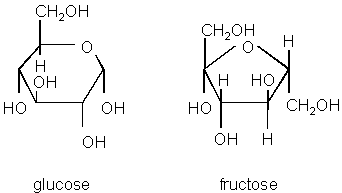 For years scientists and nutritionists have been warning that more studies needed to be done to determine the complex metabolism of how our livers process and deal with fructose. While the exact biological process remains unknown, studies continue to link HFCS with many unhealthy global epidemics. 2010: The Princeton Study reveals the terrible truth A Princeton University research team has demonstrated that all sweeteners are not equal when it comes to weight gain: Rats with access to high-fructose corn syrup gained significantly more weight than those with access to table sugar, even when their overall caloric intake was the same. In addition to causing significant weight gain in lab animals, long-term consumption of high-fructose corn syrup also led to abnormal increases in body fat, especially in the abdomen, and a rise in circulating blood fats called triglycerides. The researchers say the work sheds light on the factors contributing to obesity trends in the United States.
"Some people have claimed that high-fructose corn syrup is no different than other sweeteners when it comes to weight gain and obesity, but our results make it clear that this just isn't true, at least under the conditions of our tests," said psychology professor Bart Hoebel, who specializes in the neuroscience of appetite, weight and sugar addiction. "When rats are drinking high-fructose corn syrup at levels well below those in soda pop, they're becoming obese -- every single one, across the board. Even when rats are fed a high-fat diet, you don't see this; they don't all gain extra weight." "These rats aren't just getting fat; they're demonstrating characteristics of obesity, including substantial increases in abdominal fat and circulating triglycerides," said Princeton graduate student Miriam Bocarsly. "In humans, these same characteristics are known risk factors for high blood pressure, coronary artery disease, cancer and diabetes." The Princeton researchers note that they do not know yet why high-fructose corn syrup fed to rats in their study generated more triglycerides, and more body fat that resulted in obesity. [Results published online March 18 by the journal Pharmacology, Biochemistry and Behavior.] Unusual metabolism of HFCS Discoveries about the unusual metabolism of HFCS were announced in a report published in the Archives of Internal Medicine by Julie Palmer and her colleagues at Boston University. This study showed that fructose metabolized differently from glucose, common table sugar.
"The public should be made aware that these drinks are not a healthy alternative to soft drinks with regard to risk of type 2 diabetes..."  The findings came from an assessment of 44,000 black women in the United States who were checked from 1995 through 2005. Those who said they drank two or more non-diet soft drinks (sweetened with HFCS) a day had a 24 percent increased risk for developing type 2 diabetes than those in the study who drank fewer than one regular soft drink per month, the research team said.
The findings came from an assessment of 44,000 black women in the United States who were checked from 1995 through 2005. Those who said they drank two or more non-diet soft drinks (sweetened with HFCS) a day had a 24 percent increased risk for developing type 2 diabetes than those in the study who drank fewer than one regular soft drink per month, the research team said.Women who drank two or more sweetened (HFCS) fruit drinks per day had a 31 percent increased risk compared to those who drank fewer than one such fruit drink a month. Diet soft drinks, grapefruit juice and orange juice (which contain no HFCS) were not linked to a higher diabetes risk. While pure orange and grapefruit juices also contain natural sugars, including fructose, they may have a different metabolic effect or may be more likely to be consumed as part of a meal, the investigators said. Those who develop type 2 diabetes will need a blood sugar monitor and will need to change their diet for the rest of their lives. A related study found that a low-fat diet does not seem to change the risk of diabetes. Thus becoming obese and becoming diabetic does not seem to be linked purely to weight gain from fat, but rather from the obesity specifically induced by the HFCS.
"The common denominator that appears clear is that calories trump everything. And certain nutrients, like high fructose corn syrup, make it easier to overeat. So, what's so different about HFCS? Natural sources of fructose include fruits, some vegetables, honey, sugar cane and sugar beets. In a normal diet, fructose would only be ingested in these natural forms. It would remain a relatively low source of sugar. Today, the inclusion of fructose in virtually every food product dramatically increases the proportion of fructose in our diet. For many years, Dr. Meira Fields and her coworkers at the US Department of Agriculture investigated the harmful effects of dietary sugar on rats. They discovered that when male rats are fed a diet deficient in copper, with sucrose as the carbohydrate, they develop severe pathologies of vital organs. Liver, heart and testes exhibit extreme swelling, while the pancreas atrophies, invariably leading to death of the rats before maturity. Sucrose is a disaccharide composed of 50 percent glucose and 50 percent fructose. Dr. Fields repeated her experiments to determine whether it was the glucose or fructose moiety that caused the harmful effects. Starch breaks down into glucose when digested. On a copper-deficient diet, the male rats showed some signs of copper deficiency, but not the gross abnormalities of vital organs that occur in rats on the sucrose diet. When the rats were fed fructose, the fatal organ abnormalities occured. Pure fructose contains no enzymes, vitamins or minerals and robs the body of its micronutrient treasures in order to assimilate itself for physiological use.
In studies with rats, fructose consistently produces higher kidney calcium concentrations than glucose. Fructose generally induces greater urinary concentrations of phosphorus and magnesium and lowered urinary pH compared with glucose. In humans, fructose feeding leads to mineral losses, especially higher fecal excretions of iron and magnesium, than did subjects fed sucrose. Iron, magnesium, calcium, and zinc balances tended to be more negative during the fructose-feeding period as compared to balances during the sucrose-feeding period. According to a recent article in the American Journal for Clinical Nutrition, high fructose corn syrup (HFCS) is the likely culprit for the obesity epidemic in America, type 2 diabetes, cardiovascular disease and breast cancer. How much HFCS do we eat?
The average American consumes about 28.4 kg (62.48 pounds) of HFCS annually, versus 26.7 kg (58.74 pounds) of sucrose (common table type) sugar. Surprisingly many other countries have quite a sweet tooth! Sucrose consumption per person is higher than the USA in the following examples (note also the diabetes rates):
* USA: 26.7 kg, 58.74 lbs. -- diabetes rate 7.8% American Indians hit hard with diabetes According to government health officials, not only do the American Indian and Alaska Native populations suffer have the highest diabetes rates among ethnic groups, but the disease is increasing in the young American Indian population. Native American Indians have lived an ethnically isolated existence for tens of thousands of years. They have survived and evolved in a natural environment, free from processed and chemically altered food. As such, Native American Indians represent an example of a human anatomy in harmony with what is healthy and nutritious. European vices, such as alcohol and sugar, have a dramatic effect on these people and so demonstrate the dangerous and unhealthy aspects of our modern diet.
 "In some communities, the prevalence rate [of diabetes] is as high as 60 percent among adults," Charles Grim, the head of the Indian Health Service, told the Senate Indian Affairs Committee. Diabetes increased 128 percent among teens ages 15 to 19 between 1990 and 2004. The disease increased 77 percent among young people younger than 15 during the same time frame. Another possible hint at culture or diet as a factor can be seen in the statistics for culturally diverse New York City. According to the city's health commisioner, Dr. Yhomas R. Frieden, in the city 12.2 percent of Hispanics have diabetes, as do 10.8 percent of non-Hispanic blacks. Whites who are not Hispanic have the lowest rate -- 5 percent -- and Asians are second to last, with 6.8 percent. The Bronx leads the city in diabetics, with 11.5 percent of residents having the illness, while 4.6 percent of Staten Island residents have it. Ignoring the facts While the exact physiology of the link to diabetes has yet to be understood, several human and animal studies confirm that high levels of fructose, as found in HFCS, can be deadly. Beverage and food manufacturers don't care about these studies because the causal link is not there to make them culpable. They continue to reap the profits and claim that HFCS is totally safe. In the 40 years since the introduction of high-fructose corn syrup as a cost-effective sweetener in the American diet, rates of obesity in the U.S. have skyrocketed, according to the Centers for Disease Control and Prevention. In 1970, around 15 percent of the U.S. population met the definition for obesity; today, roughly one-third of the American adults are considered obese, the CDC reported. High-fructose corn syrup is found in a wide range of foods and beverages, including fruit juice, soda, cereal, bread, yogurt, ketchup and mayonnaise. On average, Americans consume 60 pounds of the sweetener per person every year. Here are some studies which further implicate HFCS:
 Comments: Cinnamon Prevents Insulin Resistance Induced by High-Fructose Diet By VRP Staff Cinnamon extract fed to rats along with a high-fructose diet prevented the development of insulin resistance in the animals, researchers report. Researchers fed the rats a high-fructose diet for three weeks with and without 300 mg/kg cinnamon extract per day added to the drinking water. A group of rats fed a normal diet served as controls. The researchers then analyzed the animals ability to use glucose and insulin. The results indicate that cinnamon extract impacted various aspects of glucose metabolism. Cinnamon appeared to block the development of insulin resistance in the animals. Because the administration of L-arginine blocked the beneficial effects of the cinnamon, researchers theorized that cinnamons effects were due at least in part by influencing the nitric oxide pathway in skeletal muscle, since L-arginine stimulates the production of nitric oxide. Reference: Qin B, Nagasaki M, Ren M, Bajotto G, Oshida Y, Sato Y. Cinnamon extract prevents the insulin resistance induced by a high-fructose diet. Horm Metab Res. 2004 Feb;36(2):119-25. Cinnamon is found in VRPs GluControl™, which also contains Goats Rue, the herbal prototype of the antidiabetic drug Metformin. |
 Early in human civilization, the limited diets of local farming and food production were supplemented by food specialists who imported things like spices, grains and sugar, making our consumption of food more interesting and varied. Farmers and fishermen sold their products in local markets, making it easier for the average human to obtain and eat a well balanced and varied diet. Consumers had always trusted that their food supply was healthy.
Early in human civilization, the limited diets of local farming and food production were supplemented by food specialists who imported things like spices, grains and sugar, making our consumption of food more interesting and varied. Farmers and fishermen sold their products in local markets, making it easier for the average human to obtain and eat a well balanced and varied diet. Consumers had always trusted that their food supply was healthy.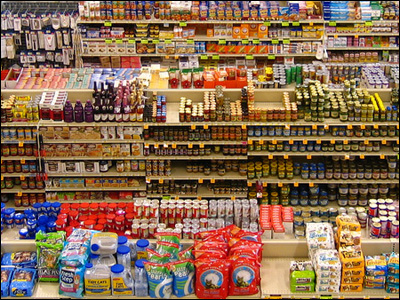 Have you had a soft drink today? How about a candy bar, a stick of gum or some fruit juice. These are just the most obvious foods that contain high fructose corn syrup or HFCS. It's in just about everything that's sweet and things you don't normally think of as sweet. Things like bread, cereal, coffee creamer, ketchup and salad dressing all contain High Frustose Corn Syrup. It's now implicated as the main source of obesity, high blood pressure, elevated triglycerides and diabetes -- conditions that cause mysery and death around the globe.
Have you had a soft drink today? How about a candy bar, a stick of gum or some fruit juice. These are just the most obvious foods that contain high fructose corn syrup or HFCS. It's in just about everything that's sweet and things you don't normally think of as sweet. Things like bread, cereal, coffee creamer, ketchup and salad dressing all contain High Frustose Corn Syrup. It's now implicated as the main source of obesity, high blood pressure, elevated triglycerides and diabetes -- conditions that cause mysery and death around the globe.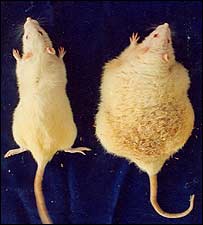 The Princeton Experiment
The Princeton Experiment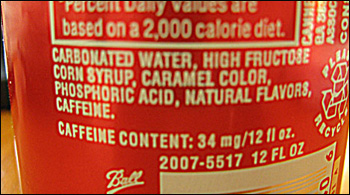 While naturally occurring sugars, as well as sucrose, contain fructose bound to other sugars, high fructose corn syrup contains a good deal of "free" or unbound fructose. Research indicates that this free fructose interferes with the heart's use of key minerals like magnesium, copper and chromium. Among other consequences, HFCS has been implicated in elevated blood cholesterol levels and the creation of blood clots. It has been found to inhibit the action of white blood cells so that they are unable to defend the body against harmful foreign invaders.
While naturally occurring sugars, as well as sucrose, contain fructose bound to other sugars, high fructose corn syrup contains a good deal of "free" or unbound fructose. Research indicates that this free fructose interferes with the heart's use of key minerals like magnesium, copper and chromium. Among other consequences, HFCS has been implicated in elevated blood cholesterol levels and the creation of blood clots. It has been found to inhibit the action of white blood cells so that they are unable to defend the body against harmful foreign invaders.